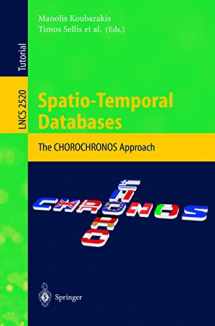
Spatio-Temporal Databases: The CHOROCHRONOS Approach (Lecture Notes in Computer Science, 2520)
Book details
Summary
Description
A summary of research carried out in the CHOROCHRONOS Project, established as an EC-funded Training and Mobility Research Network with the objective of studying the design, implementation, and application of spatio-temporal database management systems.
The nine coherent chapters by leading research groups are written in a tutorial style, making the research contributions of the project accessible to a wider audience interested in spatio-temporal information processing. Following an introductory overview, the book presents chapters on ontologies for spatio-temporal databases, conceptual models, spatio-temporal models and languages, access methods and query processing, architectures and implementation of spatio-temporal DBMS, interactive spatio-temporal documents, and future perspectives.


We would LOVE it if you could help us and other readers by reviewing the book
Book review



